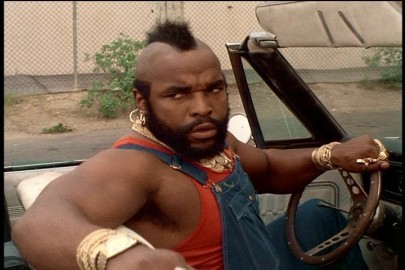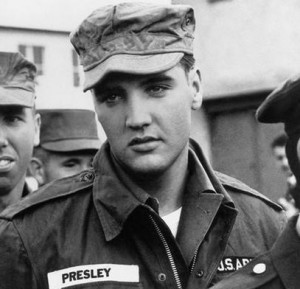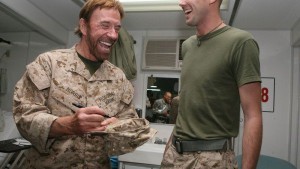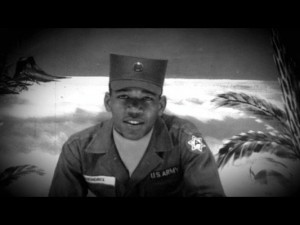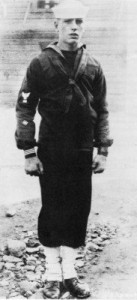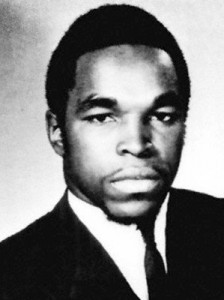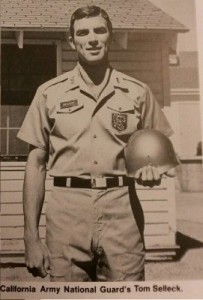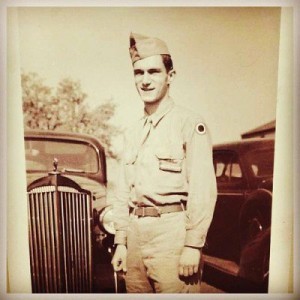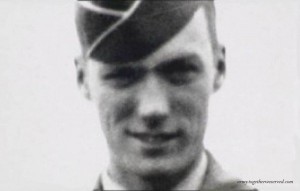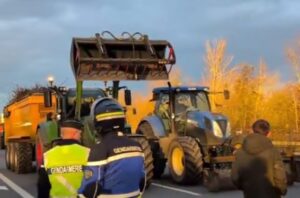Not all actors had that ‘Hollywood’ life style from the get go. Some had the tough job of being in military service. These ten actors are household names, they’ve gone on to great things, and they all have one thing in common – they are veterans. Some of them made use of military education benefits to further their careers. Others used their experiences in uniform as the springboard for a life in the spotlight – thinking Chuck Norris here but was surprised about Mr T being on this list. Also didn’t know Clint Eastwood crashed in a WWII bomber.
Gene Hackman
Hackman was born in San Bernardino, California, the son of Anna Lyda Elizabeth (née Gray) and Eugene Ezra Hackman. He has a brother, Richard. He has Pennsylvania Dutch (German), English, and Scottish ancestry, and his mother was born in Lambton, Ontario. According to a plaque in a city park, he worked for a time as a dog catcher for the local animal shelter. His family moved frequently, finally settling in Danville, Illinois, where they lived in the house of his English-born maternal grandmother, Beatrice. Hackman’s father operated the printing press for the Commercial-News, a local paper. As a young teenager Hackman was in some of the same social circles as the older Dick Van Dyke at that time. Van Dyke was friends with his older brother Richard. Hackman’s parents divorced in 1943 and his father subsequently left the family.
Gene lived briefly in Storm Lake, Iowa and spent his sophomore year at Storm Lake High School. At the age of sixteen, Hackman left home to join the United States Marine Corps, where he served four-and-a-half years as a field radio operator. He was stationed in China (Qingdao, and later in Shanghai). When the Communist Revolution was victorious in 1949, Hackman was stationed in Hawaii and Japan. After his discharge, he moved to New York, working in several minor jobs. His mother died in 1962 as a result of a fire she accidentally set while smoking.
Gene lived briefly in Storm Lake, Iowa and spent his sophomore year at Storm Lake High School. At the age of sixteen, Hackman left home to join the United States Marine Corps, where he served four-and-a-half years as a field radio operator. He was stationed in China (Qingdao, and later in Shanghai). When the Communist Revolution was victorious in 1949, Hackman was stationed in Hawaii and Japan. After his discharge, he moved to New York, working in several minor jobs.
Elvis Presley
On March 24, Presley was inducted into the U.S. Army as a private at Fort Chaffee, near Fort Smith, Arkansas. His arrival was a major media event. Hundreds of people descended on Presley as he stepped from the bus; photographers then accompanied him into the fort. Presley announced that he was looking forward to his military stint, saying he did not want to be treated any differently from anyone else: “The Army can do anything it wants with me.”
Soon after Presley commenced basic training at Fort Hood, Texas, he received a visit from Eddie Fadal, a businessman he had met on tour. According to Fadal, Presley had become convinced his career was finished—”He firmly believed that.” But then, during a two-week leave in early June, Presley recorded five songs in Nashville. In early August, his mother was diagnosed with hepatitis and her condition rapidly worsened. Presley, granted emergency leave to visit her, arrived in Memphis on August 12. Two days later, she died of heart failure, aged 46. Presley was devastated; their relationship had remained extremely close—even into his adulthood, they would use baby talk with each other and Presley would address her with pet names.
After training, Presley joined the 3rd Armored Division in Friedberg, Germany, on October 1. Introduced to amphetamines by a sergeant while on maneuvers, he became “practically evangelical about their benefits”—not only for energy, but for “strength” and weight loss, as well—and many of his friends in the outfit joined him in indulging. The Army also introduced Presley to karate, which he studied seriously, later including it in his live performances. Fellow soldiers have attested to Presley’s wish to be seen as an able, ordinary soldier, despite his fame, and to his generosity. He donated his Army pay to charity, purchased TV sets for the base, and bought an extra set of fatigues for everyone in his outfit.
Chuck Norris
Norris has described his childhood as downbeat. He was nonathletic, shy, and scholastically mediocre.His father, Ray, worked intermittently as an automobile mechanic, and went on alcohol drinking binges that lasted for months at a time. Embarrassed by his father’s behavior and the family’s financial plight, Norris developed a debilitating introversion that lasted for his entire childhood.
He joined the United States Air Force as an Air Policeman (AP) in 1958 and was sent to Osan Air Base, South Korea. It was there that Norris acquired the nickname Chuck and began his training in Tang Soo Do (tangsudo), an interest that led to black belts in that art and the founding of the Chun Kuk Do (“Universal Way”) form. When he returned to the United States, he continued to serve as an AP at March Air Force Base in California.
Norris was discharged in August 1962. He worked for the Northrop Corporation and opened a chain of Karate schools including a storefront school in his then-hometown of Torrance on Hawthorne Boulevard. Norris’ official website lists celebrity clients at the schools; among them Steve McQueen, Chad McQueen, Bob Barker, Priscilla Presley, Donny Osmond and Marie Osmond.
Jimi Hendrix
Before Hendrix was 19 years old, law enforcement authorities had twice caught him riding in stolen cars. When given a choice between spending time in prison or joining the Army, he chose the latter and enlisted on May 31, 1961. After completing eight weeks of basic training at Fort Ord, California, he was assigned to the 101st Airborne Division and stationed at Fort Campbell, Kentucky. He arrived there on November 8, and soon afterward he wrote to his father: “There’s nothing but physical training and harassment here for two weeks, then when you go to jump school … you get hell. They work you to death, fussing and fighting.” In his next letter home, Hendrix, who had left his guitar at his girlfriend Betty Jean Morgan’s house in Seattle, asked his father to send it to him as soon as possible, stating: “I really need it now.” His father obliged and sent the red Silvertone Danelectro on which Hendrix had hand-painted the words “Betty Jean”, to Fort Campbell. His apparent obsession with the instrument contributed to his neglect of his duties, which led to verbal taunting and physical abuse from his peers, who at least once hid the guitar from him until he had begged for its return.
In November 1961, fellow serviceman Billy Cox walked past an army club and heard Hendrix playing guitar. Intrigued by the proficient playing, which he described as a combination of “John Lee Hooker and Beethoven”, Cox borrowed a bass guitar and the two jammed. Within a few weeks, they began performing at base clubs on the weekends with other musicians in a loosely organized band called the Casuals.
Hendrix completed his paratrooper training in just over eight months, and Major General C.W.G. Rich awarded him the prestigious Screaming Eagles patch on January 11, 1962. By February, his personal conduct had begun to draw criticism from his superiors. They labeled him an unqualified marksman and often caught him napping while on duty and failing to report for bed checks. On May 24, Hendrix’s platoon sergeant, James C. Spears, filed a report in which he stated: “He has no interest whatsoever in the Army … It is my opinion that Private Hendrix will never come up to the standards required of a soldier. I feel that the military service will benefit if he is discharged as soon as possible.” On June 29, 1962, Captain Gilbert Batchman granted Hendrix an honorable discharge on the basis of unsuitability. Hendrix later spoke of his dislike of the army and falsely stated that he had received a medical discharge after breaking his ankle during his 26th parachute jump.
Charlton Heston
In 1944, Heston enlisted in the United States Army Air Forces. He served for two years as a radio operator and aerial gunner aboard a B-25 Mitchell stationed in the Alaskan Aleutian Islands with the 77th Bombardment Squadron of the Eleventh Air Force. He reached the rank of Staff Sergeant.
Heston married Northwestern University student Lydia Marie Clarke, who was six months his senior. That same year he joined the military. After his rise to fame, Heston narrated for highly classified military and Department of Energy instructional films, particularly relating to nuclear weapons, and “for six years Heston [held] the nation’s highest security clearance” or Q clearance.” The Q clearance is similar to a DoD or Defense Intelligence Agency (DIA) clearance of Top Secret.
Humphrey Bogart
Bogart followed his passion for the sea and enlisted in the United States Navy in the spring of 1918. He recalled later, “At eighteen, war was great stuff. Paris! Sexy French girls! Hot damn!” Bogart is recorded as a model sailor who spent most of his sea time after the Armistice ferrying troops back from Europe.
It was during his naval stint that Bogart may have received his trademark scar and developed his characteristic lisp, though the actual circumstances are unclear. In one account his lip was cut by shrapnel when his ship, the USS Leviathan, was shelled, although some claim Bogart did not make it to sea until after the Armistice had been signed. Another version, which Bogart’s long-time friend, author Nathaniel Benchley, holds to, is that Bogart was injured while taking a prisoner to Portsmouth Naval Prison in Kittery, Maine. Changing trains in Boston the handcuffed prisoner allegedly asked Bogart for a cigarette, then while Bogart looked for a match, the prisoner smashed him across the mouth with the cuffs, cutting Bogart’s lip and fleeing. Recaptured, the prisoner was taken to jail. An alternate version has Bogart struck in the mouth by a handcuff loosened while freeing his charge, the other still round the prisoner’s wrist.
Mr T
Mr. T ( Lawrence Tureaud)Tureaud attended Dunbar Vocational High School where he played football, wrestled, and studied martial arts. While at Dunbar he became the city-wide wrestling champion two years in a row. He won a football scholarship to Prairie View A&M University, where he majored in mathematics, but was expelled after his first year.
He then enlisted in the United States Army and served in the Military Police Corps. In November 1975, Tureaud was awarded a letter of recommendation by his drill sergeant, and in a cycle of six thousand troops Tureaud was elected “Top Trainee of the Cycle” and was also promoted to squad leader. In July 1976, Tureaud’s platoon sergeant punished him by giving him the detail of chopping down trees during training camp at Fort McCoy in Wisconsin, but did not tell him how many trees, so Tureaud single-handedly chopped down over 70 trees from 6:30–10:00 a.m., when a shocked major superseded the sergeant’s orders.
Tom Selleck
During the Vietnam War, Selleck was issued draft orders. To take some measure of control over the situation, he joined the California National Guard in the 160th infantry regiment. He served from 1967 to 1973. He later appeared on California National Guard recruiting posters.
The military left a strong impression on Selleck, who recalls his service with pride, “I am a veteran, I’m proud of it,” he said. “I was a sergeant in the U.S. Army infantry, National Guard, Vietnam era. We’re all brothers and sisters in that sense.” Upon returning to civilian life, he was dropped from his contract with Fox. “And then I was going to be drafted, and I got into an infantry National Guard unit and did six months active duty in the middle of my time at Fox,” Selleck said. “I had my job when I came back, and then they fired me.
Hugh Hefner
He’s known today as the swingingest guy on the planet and the man behind Playboy magazine, but before he became the biggest Playboy of them all, Hugh Hefner was an Army Soldier in World War II.
A descendant of Plymouth governor William Bradford from back in America’s colonial days, Hefner was born in Chicago in 1926. He always had smarts (he had an IQ rating of 152 as a child) and showed an interest in the journalistic life early on when he started a high school newspaper. Upon graduation in 1944 he enlisted in the Army as an infantry clerk; during Basic Training he won a sharpshooter badge for firing the M1 and made it through “Killer College,” in which troops went through maneuvers while throwing real grenades. Posted at Camp Adair in Salem, Oregon, and Camp Pickett in Virginia, Hefner contributed cartoons for Army newspapers.
Clint Eastwood
Clinton Eastwood, Jr. was born in San Francisco, the son of Clinton Eastwood Sr., a steelworker and migrant worker, and his wife Margaret Ruth (Runner) Eastwood, an IBM factory worker. He was nicknamed “Samson” by the hospital nurses because he weighed 11 pounds 6 ounces (5.2 kg) at birth. He has a younger sister, Jeanne, born in 1934.His stepfather was lumber magnate John Belden Wood (November 24, 1913 – February 18, 2004). Eastwood is of English, Irish, Scottish, and Dutch ancestry and was raised in a working class environment. Eastwood is descended from Mayflower passenger William Bradford and through this line is the 12th generation of his family born in North America and the 13th generation to live in North America.His family moved often as his father worked at jobs along the West Coast. They finally settled in Piedmont, California, where Eastwood attended Piedmont Junior High School. Shortly before he was to enter Piedmont High School, he rode his bike on the school’s sports field and tore up the wet turf; this resulted in his being asked not to enroll. Instead, he attended Oakland Technical High School, where the drama teachers encouraged him to take part in school plays. However, Eastwood was not interested. He worked at a number of jobs, including lifeguard, paper carrier, grocery clerk, forest firefighter, and golf caddy.
In 1951, Eastwood enrolled at Seattle University but was then drafted into the United States Army and assigned to Fort Ord in California, where he was appointed as a lifeguard and swimming instructor. While returning from a weekend visit to his parents in Seattle, Washington, he was a passenger on a Douglas AD bomber that ran out of fuel and crashed into the ocean near Point Reyes.Escaping from the sinking aircraft, he and the pilot swam 3 miles (5 km) to safety.
Ask me anything
Explore related questions
